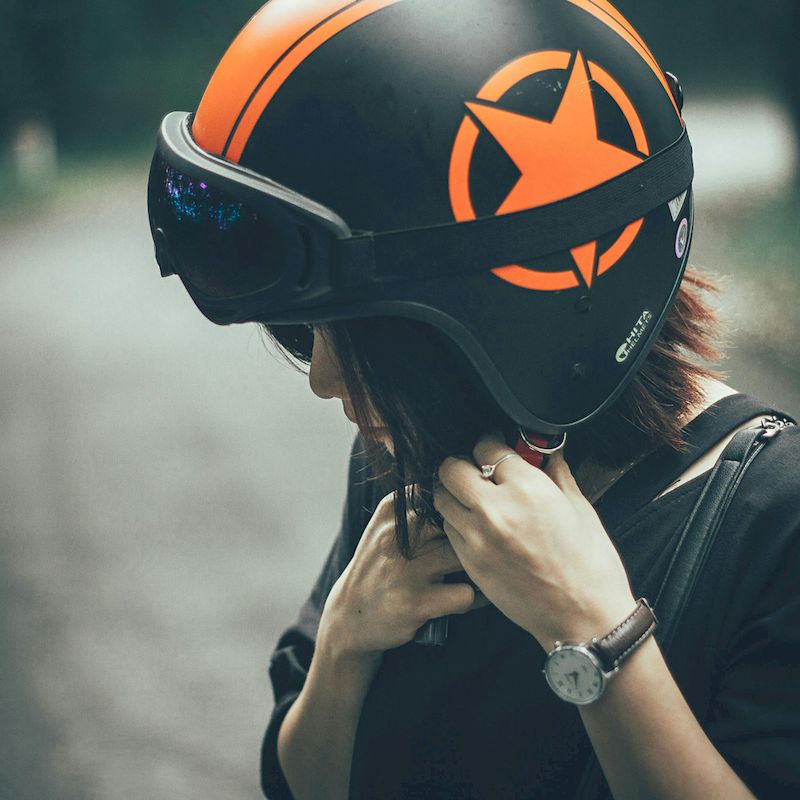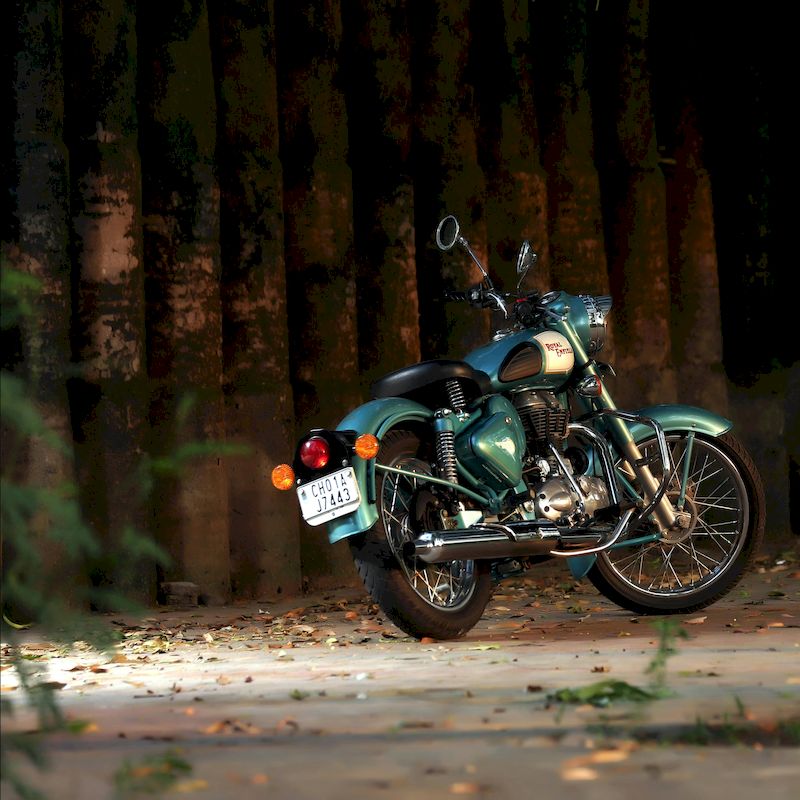Introduction
Motorcycle riding can be an exhilarating experience, bringing freedom and thrill to those who seek adventure on two wheels. However, when riding motorcycle at night, the challenges intensify. Reduced visibility, unpredictable weather, and the presence of other road users can make nighttime riding a formidable task. This article delves into the intricacies of night riding, presenting vital tips and insights to ensure that every ride is not only enjoyable but also safe.

1. Understanding Nighttime Visibility Challenges
The Importance of Adequate Lighting
One of the most significant challenges when riding motorcycle at night is reduced visibility. Your headlights are your primary source of light, and understanding their limitations is crucial. In low-light conditions, objects can appear closer or farther away than they are, and the glare from oncoming traffic can momentarily blind you.
Factors Influencing Visibility
- Street Lighting: Urban areas typically have adequate street lighting, but in rural areas, you may find yourself on unlit roads where visibility is severely compromised.
- Weather Conditions: Fog, rain, or mist can significantly reduce visibility. Riding in such conditions increases the risk of accidents dramatically.
- Your Own Health: Fatigue can impair your vision, so ensuring you are well-rested before embarking on a night ride is paramount.
2. Essential Gear for Night Riding
Protective Clothing
When riding motorcycle at night, your gear becomes more crucial than ever. Choose clothing that not only protects you from the elements but also enhances your visibility. Options include:
- Hi-Visibility Jackets: Look for jackets that are reflective or brightly colored.
- Motorcycle Gloves with Reflective Strips: Gloves will aid in grip and control while also enhancing visibility during nighttime rides.
- Pants and Boots: These should also offer protection and be made from durable materials; however, visibility features should not be overlooked.
Helmet Selection
Your helmet is your most critical piece of gear. Ensure it fits well, provides adequate protection, and features:
- Reflective Surface: Choosing a helmet with reflective materials can offer extra visibility.
- Visor: A clear visor aids in nighttime riding, while tinted visors should be avoided as they decrease visibility.
3. Adjusting Riding Techniques for Nighttime
Slower Speeds and Increased Following Distances
When riding motorcycle at night, adopting a more conservative approach is essential:
- Decrease Speed: Slowing down gives you more time to react to unforeseen obstacles or changes in the road.
- Increase Following Distances: A longer following distance allows for better reaction time. This is crucial as you might misjudge the distance to vehicles ahead of you in low visibility.
Scanning the Road Ahead
Your vision can only provide adequate feedback to your brain if you’re actively scanning the road. Look for:
- Road Signs: They might appear closer than they are.
- Animals and Obstacles: Animals may be more active at night, and they can dart onto your path unexpectedly.
4. Maintaining Your Motorcycle
Pre-ride Checks
Before riding motorcycle at night, perform thorough checks to ensure your bike is in shape. Important components include:
- Headlights and Taillights: Regularly inspect your lights. Ensure they are functioning correctly and that there isn’t any dirt obstructing them.
- Brakes and Tires: Ensure that the brakes engage smoothly and that your tires have adequate traction and air pressure.
Nighttime Maintenance Tips
- Regular Service: Schedule regular maintenance checks for your motorcycle, focusing on the entire electrical system.
- Battery Health: A weak battery can lead to dim lights; monitor your battery’s health regularly.
5. Understanding The Risks of Night Riding
Increased Risk Factors
Nighttime riding brings about unique risks that riders must be aware of:
- Reduced Reaction Time: In the dark, your ability to process information decreases. Accidents can occur swiftly without ample warning.
- Increased Presence of Drunk Drivers: Late-night riding often coincides with higher instances of DUI offenses.
- Fatigue: The inherent risk of fatigue is compounded at night, which can significantly impair reaction times and decision-making.
Skill Development
Consider taking advanced riding courses that include nighttime riding scenarios. These workshops can improve your skills and confidence when riding motorcycle at night.
6. The Joy of Night Riding
Scenic Routes and Experiences
Despite its challenges, riding motorcycle at night can be an enriching experience. Cityscapes glimmering under neon lights or country roads illuminated by a starry sky provide unique backdrops for a nighttime ride.
Group Rides
Consider organizing group rides with fellow enthusiasts. Riding together can boost safety and provide mutual support while allowing you to share the joy of nighttime experiences.
7. Enhancing Your Riding Experience with Technology
Smartphone Apps for Safe Riding
In today’s digital age, various smartphone applications can enhance your safety and enjoyment when riding motorcycle at night:
- Navigation Tools: GPS apps can provide real-time directions, helping you avoid poorly lit routes and offering the best paths for your journey.
- Weather Apps: Use apps to monitor weather conditions before and during your ride to avoid sudden changes that could impact visibility.
- Rider Forums: Participate in forums or apps designed for motorcyclists to share tips about safe night riding based on local experiences and insights.
Wearable Technology
Consider investing in wearable tech that can increase safety while riding at night:
- Smart Helmets: Some helmets come equipped with features such as built-in GPS, Bluetooth connectivity, and even heads-up displays that provide navigation without distracting you.
- Reflective Bracelets or Armbands: Wearing these can further enhance visibility. They catch light from other vehicles and alert drivers to your presence on the road.
8. Dealing with Nighttime Road Hazards
Identifying Common Night Hazards
Recognizing the specific dangers of riding motorcycle at night can help you avoid accidents:
- Road Debris: It’s harder to see debris such as branches, potholes, or loose gravel in the dark. Always scan the road actively to avoid hazards.
- Animals: Wildlife is often more active at night. Stay vigilant, especially when riding through rural areas.
- Increased Traffic: Late-night rides may include drivers who are tired, distracted, or impaired, increasing your chances of accidents.
Defensive Riding Strategies
Adopting a defensive riding stance is crucial when navigating nighttime hazards:
- Anticipate Movements: Be prepared for erratic movements from other vehicles and calculate safe stopping distances accordingly.
- Control Your Position on the Road: Stay in positions that give you the best sightlines and allow you to easily maneuver around potential hazards.
9. The Psychological Aspect of Night Riding
Dealing with Fear and Anxiety
Riding motorcycle at night can induce anxiety for some riders. Addressing this psychological aspect is key to enjoying your ride:
- Preparation is Key: An adequately prepared rider is a confident rider. Ensure that you are familiar with your bike and proficient in nighttime riding skills.
- Breathing Techniques: Before you ride, practice deep breathing or meditation. Maintaining calmness can help manage any anxiety.
Building Confidence Through Experience
The more you ride at night, the more comfortable you will become:
- Start with Short Rides: Begin with shorter trips to build your confidence and get accustomed to the unique challenges of night riding.
- Solo vs. Group Riding: Choose to ride either alone to build self-confidence or with experienced riders who can provide guidance and support.
10. Planning Your Night Ride
Routes and Destinations
Choosing the right route can make or break your nighttime riding experience:
- Familiar Roads: Stick to familiar roads at first to help you gauge your comfort level.
- Scenic Routes: If you’re looking for a beautiful ride, consider routes known for their landscapes—mountains, coastlines, or urban skylines can be particularly stunning at night.
Timing and Duration
When planning a night ride, consider the timing carefully:
- Departure Time: Aim to leave before it gets too dark to navigate safely. Being on the road as the sun sets can make the transition easier.
- Ride Duration: Limit your riding time to prevent fatigue. Nights can be long, and it’s essential to stay sharp.
11. Community and Support in Night Riding
Join Riding Clubs or Organizations
Being part of a riding community can enhance your experience significantly. Look out for:
- Local Riding Clubs: Many clubs host night rides, providing you with a structured and social riding environment.
- Online Communities: Engage with others online who share your passion for night riding, exchanging tips and experiences.
Sharing experiences can serve as a valuable learning tool:
- Discuss Experiences: Open conversations about challenges faced while night riding can help others prepare better for their own ventures.
- Mentorship: Experienced riders can serve as mentors to newcomers, guiding them through techniques or teaching them how to handle specific situations.
Conclusion
Being well-prepared is the key to enjoying the thrilling experience of riding motorcycle at night safely and confidently.

